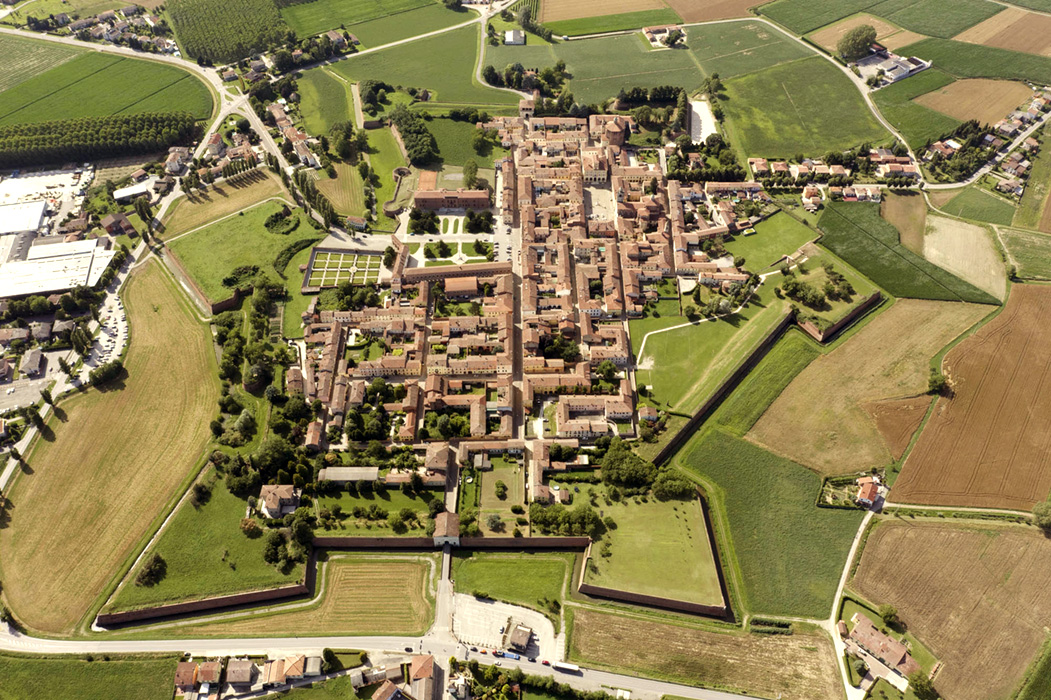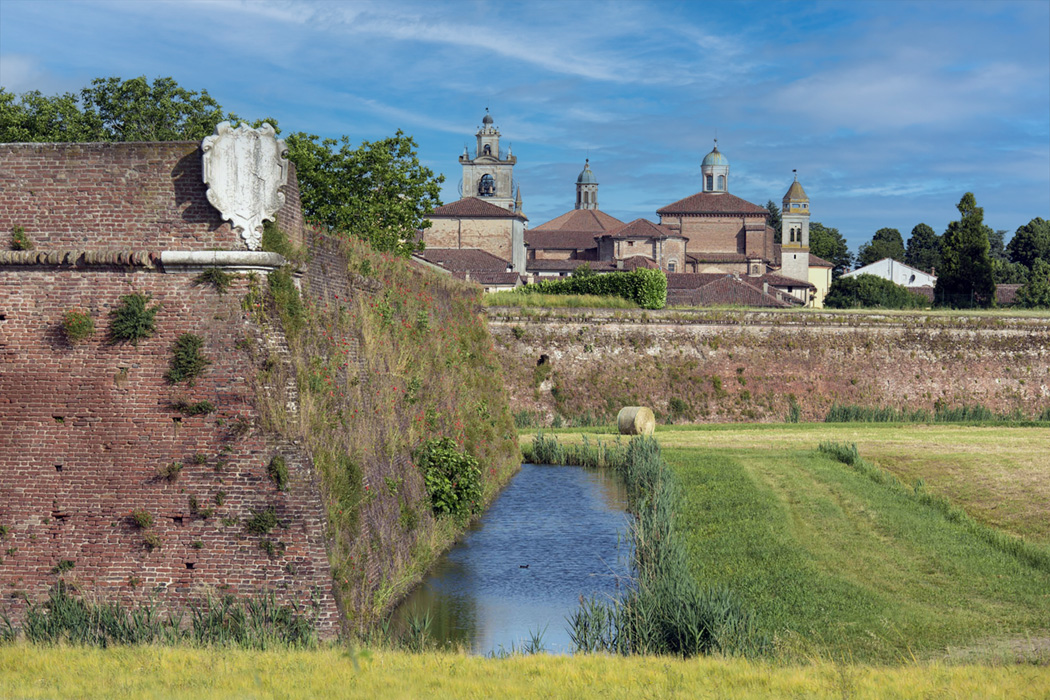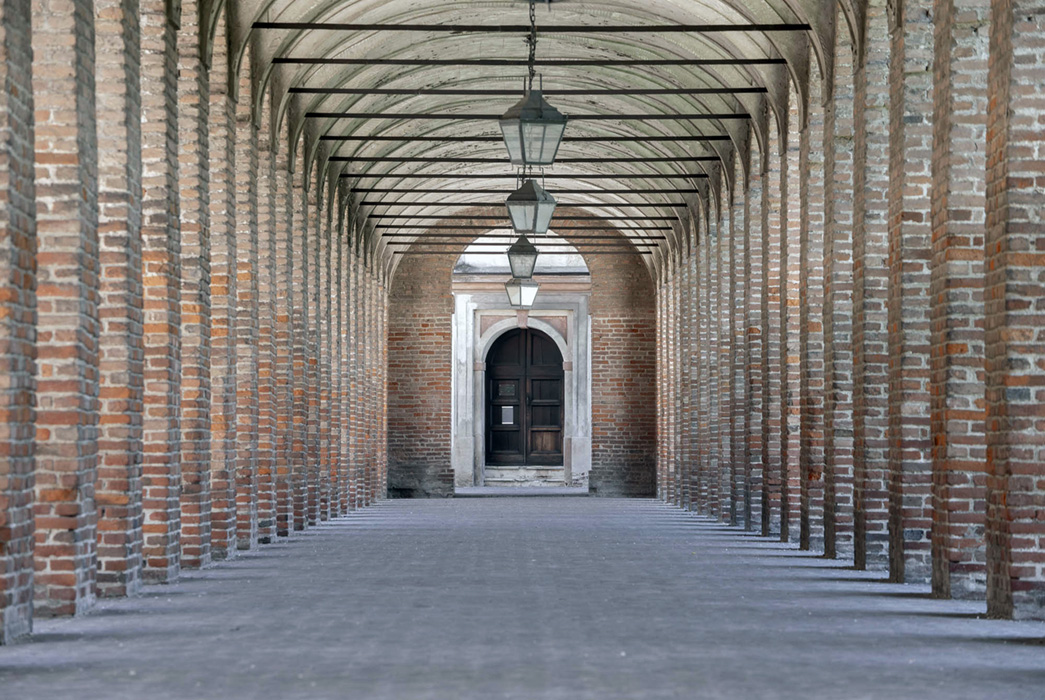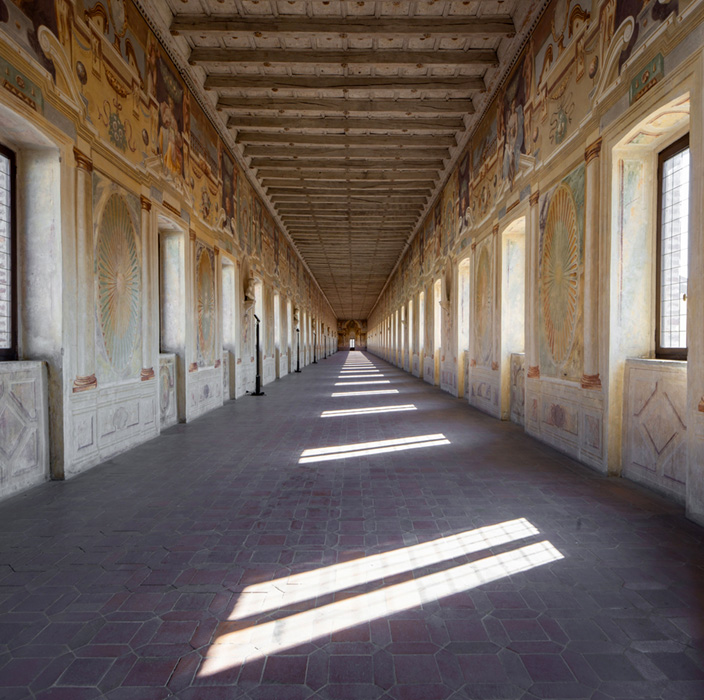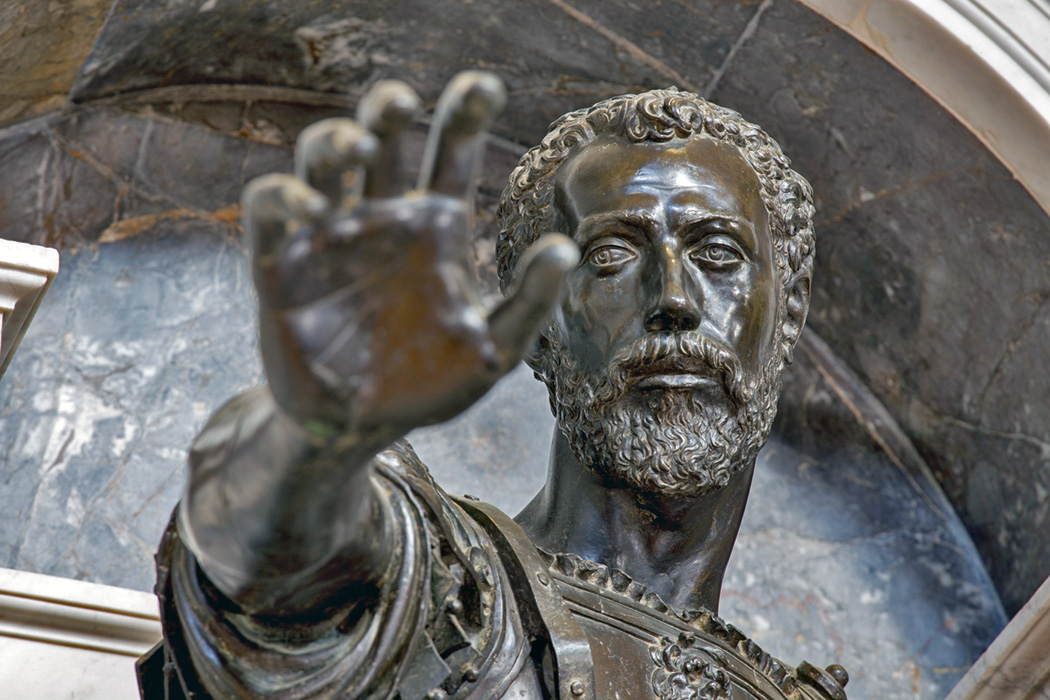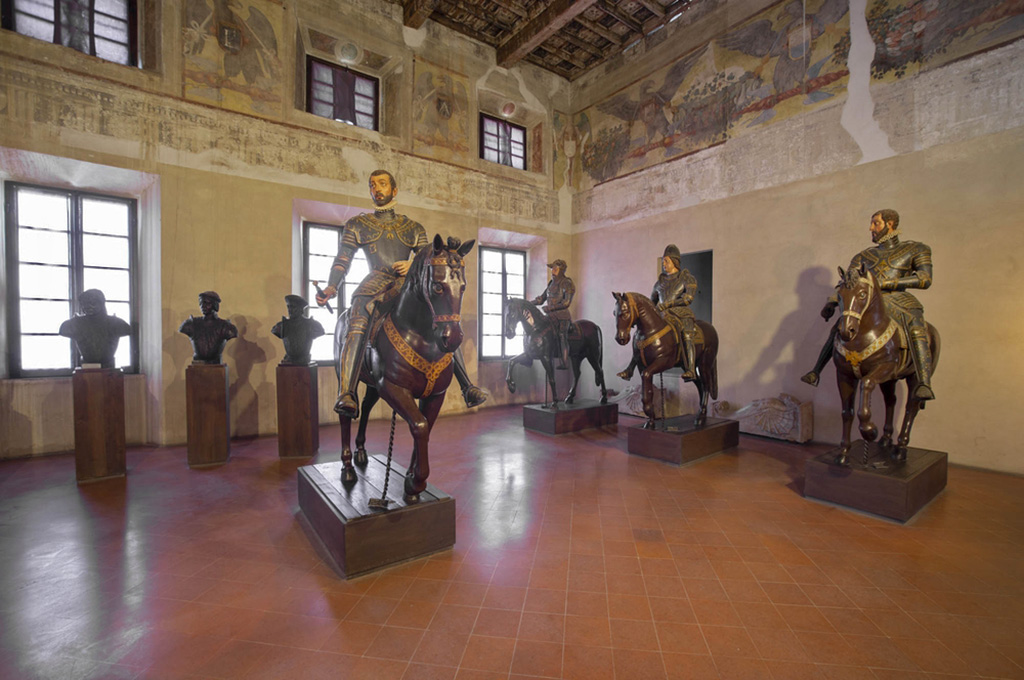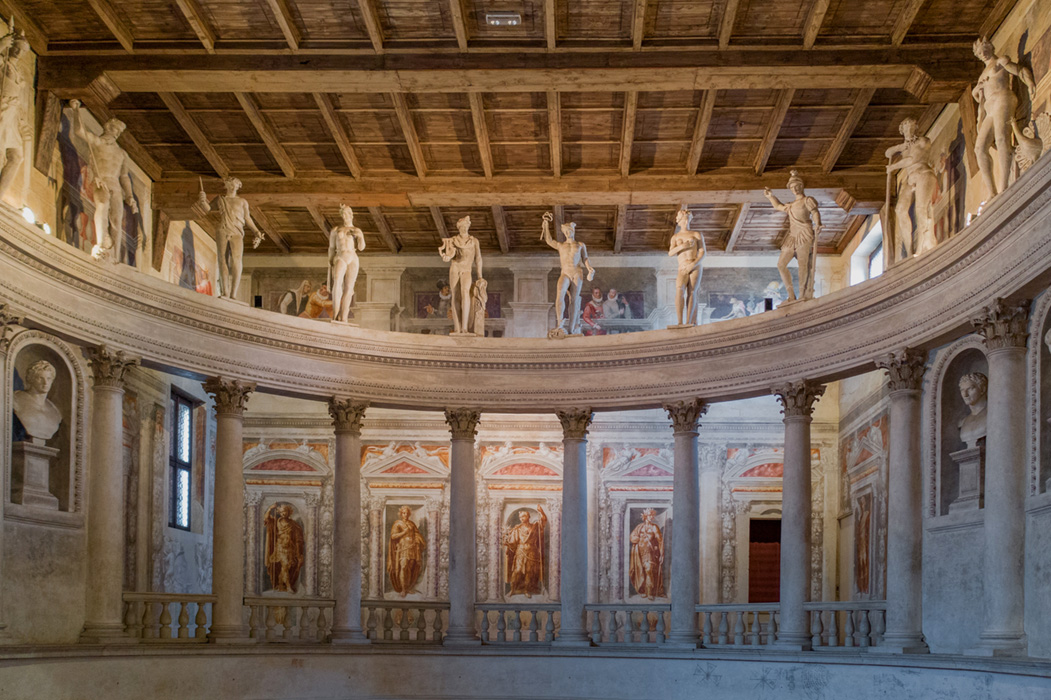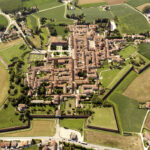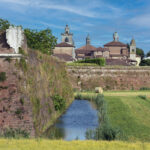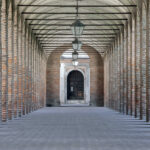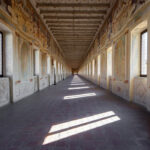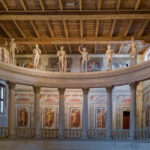Sabbioneta
>>Lake Garda Golf District
>>Emilia Golf District
In the mid-16th to late 16th century, Vespasiano Gonzaga Colonna founded Sabbioneta on the site where an ancient settlement and his grandfather’s fortress once stood. Sabbioneta’s strategic location in the Po Valley, between the Po and Oglio rivers, along the ancient Via Vitelliana, and on alluvial ground, made it a desirable location. Gonzaga intended Sabbioneta to serve primarily as a fortress, and its defensive walls were among the strongest in Spanish Lombardy at the time.
Sabbioneta functioned as the capital of a small state within a larger regional context. The Duchy of Milan, then under Spanish governance, lay to the west, while the Duchy of Mantua, ruled by the primary Gonzaga lineage, Vespasiano’s cousins, lay to the east, beyond the Oglio River. The Duchy of Parma and Piacenza, controlled by the Farnese family, Gonzaga’s allies and friends, lay to the south of the Po. The small state of Sabbioneta primarily occupied the eastern portion of the diocese of Cremona and served as a crossroads for commercial traffic in the middle course of the Po and communication between the lower Brescia and Emilia regions.
If one arrives from Mantua or Parma, he will see Sabbioneta surrounded by a massive wall. Six bastions give it the appearance of an irregular hexagon, which was part of the original design by Vespasiano. The duke was also known for his hydraulic engineering interventions, which benefited both agriculture and health.
After Vespasiano, Sabbioneta was never modified in its structure, which is a sign of unchanging harmony and passion. In just 35 years, a small village with a fortress became an eclectic Renaissance ideal city, the “Novella Roma,” recognized by UNESCO as a World Heritage Site. It was identified as a powerful bastion, where the road layout and wide squares welcomed the buildings of public administration and court life, as well as numerous religious buildings, a synagogue, and important cultural institutions such as the academy of Greek and Latin literature, schools, mint, etc.
With the death of Vespasiano, Sabbioneta began a slow and inexorable decline. It was first incorporated into the domains of the Gonzaga of Mantua and the cadets of San Martino dall’Argine, then followed the unfortunate fate of the Mantuan duchy. In 1746, it ended up under the direct control of the Habsburg Empire for fifty years, during which the fortress was dismantled and the convents were suppressed, resulting in the requisition of movable and immovable property. The city was subsequently stripped by Napoleon’s troops.
From 1814 to 1859, it belonged to the Lombardo-Venetian Kingdom and was annexed to the Kingdom of Italy. The Ducal Palace was transformed into the Municipality, and the city followed the fate of the new unified state.
The first restoration campaign involved the redevelopment of the Teatro all’Antica, which had fallen into disuse as a municipal cinema, and Palazzo Giardino with the Galleria degli Antichi. The works in the Ducal Palace lasted until 1971, finally transforming the historic building into a monumental venue.

